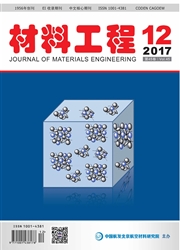

 中文摘要:
中文摘要:
空气部件在 tribo 对的 tribological 行为上有影响。通过改变空气部件,对在高滑动速度的黄铜的 CrNiMo 钢的 tribological 行为上的空气部件的效果被调查。wear 测试在高速度的磨擦上被执行并且穿其测试空气能被控制的测试钻塔。测试在四滑动速度被执行(30, 40, 50, 60 m/s ) ,一个接触压力(1.33 MPa ) 和二个空气部件(N 2 或 O 2) 。各种各样的大头针的穿的表面的形态学与一台扫描电子显微镜被观察。为钢的表面和 subsurfaces 的化学作文与精力分散光谱学被决定。结果证明钢大头针的 wear 率总是是低的,滑动速度在氧空气增加,并且在氮空气的钢大头针的 wear 率比在氧空气的钢大头针的高。在氧空气在钢的穿的表面上形成的薄、紧缩的氧化层起了一个关键作用在,这被发现穿抵抗。然而,钢大头针的 wear 率很快增加了,滑动速度在氮空气增加,它被归因于在钢的穿的表面上形成的厚、松开的表面层。
 英文摘要:
英文摘要:
The atmosphere components have an influence on tribological behaviors of tribo-pairs. Through changing the atmosphere component, the effect of atmosphere component on the tribological behaviors of CrNiMo steel against brass at high sliding velocity was investigated. The wear test was carried out on a high-speed friction and wear test rig whose test atmosphere could be controlled. The tests were performed at four sliding velocities (30, 40, 50, 60 m/s), one contact pressure (1.33 MPa) and two atmosphere components (N2 or O2). The morphologies of the worn surfaces of various pins were observed with a scanning electron microscope. The chemical compositions of the surfaces and subsurfaces for steels were determined with an energy dispersion spectroscopy. The results showed that the wear rate of the steel pins were low all the time with the sliding velocity increasing in oxygen atmosphere, and that the wear rate of the steel pin in nitrogen atmosphere was higher than that of the steel pin in oxygen atmosphere. It was found that the thin and compact oxidation layer formed on the worn surface of the steel in oxygen atmosphere played a key role in wear resistance. However, the wear rate of the steel pin increased rapidly with the sliding velocity increasing in nitrogen atmosphere, which was attributed to the thick and loose surface layer formed on the worn surface of the steel.
 同期刊论文项目
同期刊论文项目
 同项目期刊论文
同项目期刊论文
 Effect of different atmospheres on dry friction behavior of steel sliding against brass at high spee
Effect of different atmospheres on dry friction behavior of steel sliding against brass at high spee Effect of friction heat on tribological behavior of M2 steel against GCr15 steel in dry sliding syst
Effect of friction heat on tribological behavior of M2 steel against GCr15 steel in dry sliding syst 期刊信息
期刊信息
